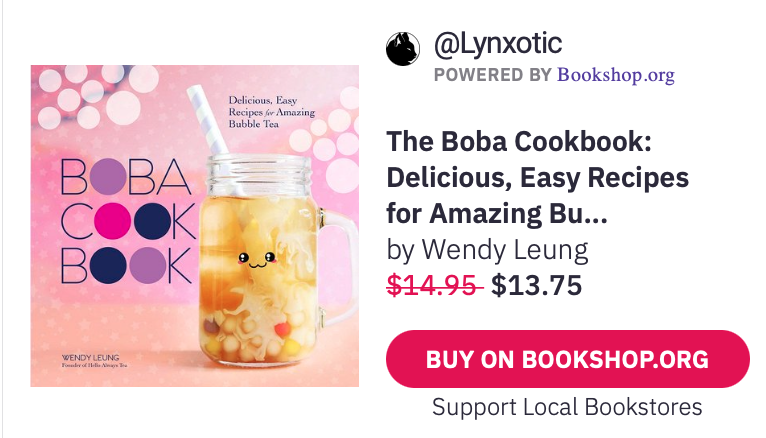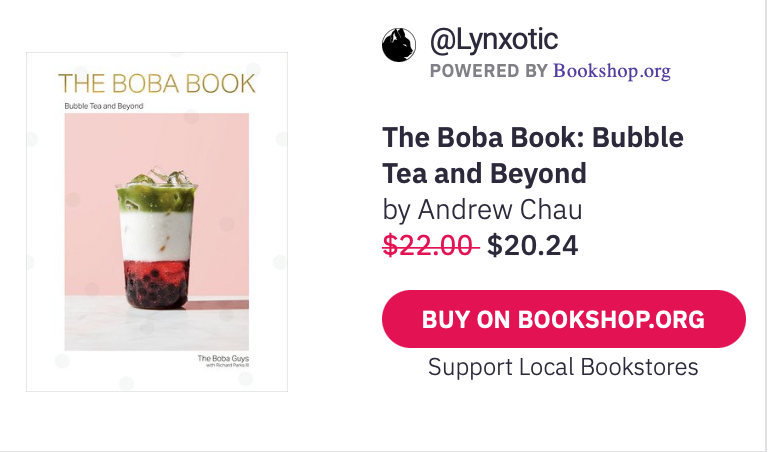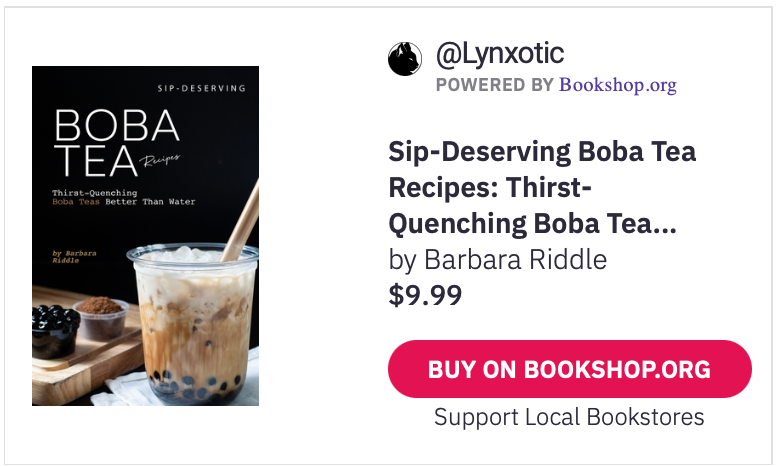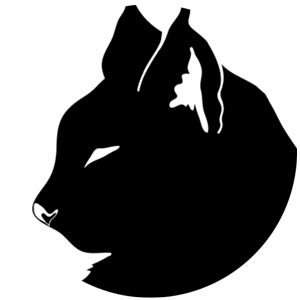Food and Cooking
How to Make Bubble Tea Tapioca Balls (Boba Pearls)
Published
2 years agoon
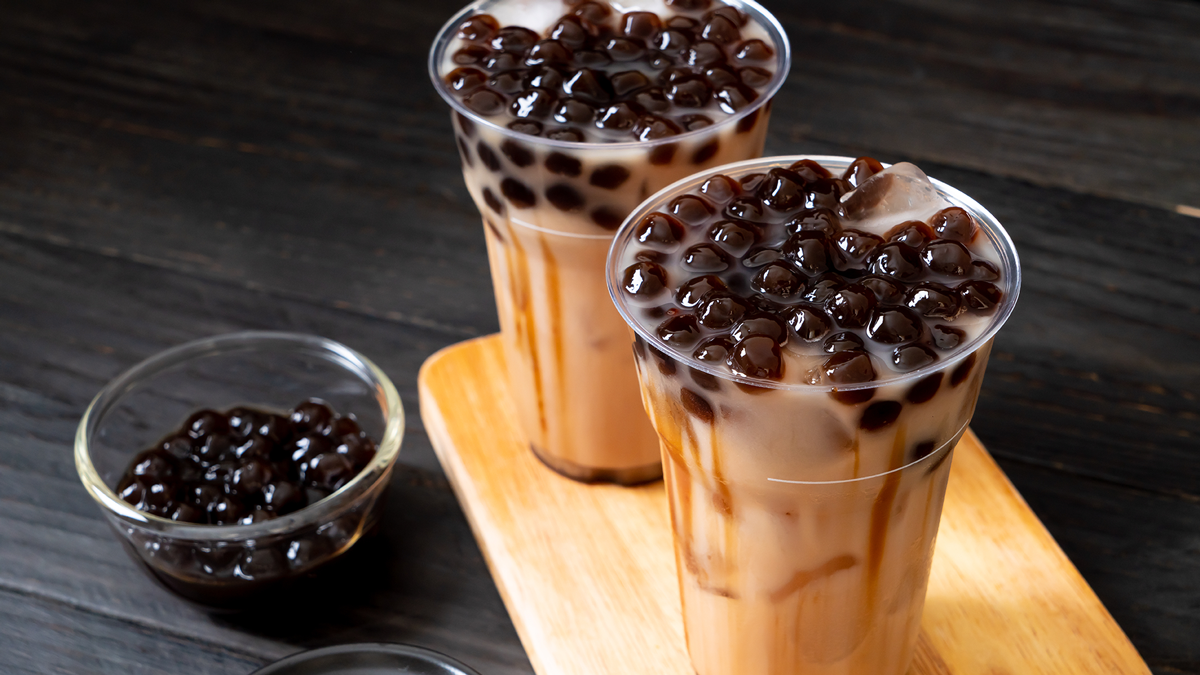
Boba tea by any other name…
Pearl Milk Tea, Bubble Tea, Tapioca Tea, Boba Tea, or in Taiwan, which is said to be the home country the drink originates from, they call it zhenzhu naicha – all these are different names that are essentially interchangeable for the same delicious drink.
Although Taiwan undoubtedly wins top slot for the boba capital of the world (with Hong Kong a close second), these cold beverages are a go-to option for millions across the globe; it’s enjoyed all over Asia, North America and Europe. Located in the United States myself, I’ve seen the growing popularity over recent years, with many new bubble tea shops often strategically placed near college campuses!
The recent history of bubble tea, and when boba really started to make a name in the beverage world, dates back to the early 1980’s, however, Milk tea had been known and enjoyed in Taiwan and East Asia long before that.
Bubble tea (in Chinese: boba nai cha) comes in a vast array of flavors (there are hundreds of different variations to how the tea is made up), but the foundation for the popular drink pretty much sticks to the basics. The main ingredients are : tea, milk, sweetener, and tapioca balls, also known as boba. The name Bubble Tea and Pearl Tea all stem from the star ingredient; the black tapioca pearls, or boba balls, that are small spheres and circular in shape, with a taste some say is reminiscent of tapioca pudding, only chewy and with tea!
And I guess saying black tapioca pearls is better than referring to the black pearl tapioca bubbles as ‘chewy balls’.
Where can you get your hands on this luscious Taiwanese Drink? The short answer is that you can either purchase some at one of many tea house chain shops (boba cafe), or you can make it, actually quite easily, at home.
The main ingredients are: tea, milk (or milk alternative) and a sweetener of your choice. And of course we cannot forget the star ingredient that makes it all worth while; the tapioca pearls or boba.
Are there any health benefits to Boba Tea?
There’s no definitive research that Bubble or Boba Tea has special or particular added health benefits. However the core ingredient, tea, particularly green tea, has been found to have health benefits, including lowering your blood pressure. The Black and Green teas which are popular teas for the cold drink also have caffeine which can boost your energy levels and potentially even aid with weight loss.
One popular topping for Bubble Tea is aloe vera grass jelly. Aloe vera has associations with healing, mainly with skin irritations and sunburns, however when ingested it’s also been linked to lowered blood glucose levels.
What exactly are those Pearls in Boba Tea?
The defining feature of the tea, for most aficionados, is all about what is at the bottom of the cup, those chewy tapioca balls. Simply defined, tapioca is a starch that is extracted from the cassava root. When the tapioca starch is ground up into tapioca flour, the tapioca dough is rolled into smaller sized balls that, once cooked, create the chewy texture that is the signature feature of Boba Tea.
The compounds in tapioca used for food flavoring, which are sometimes found in boba, are approved for consumption and use by the food and drug administration.
According to Liu han-chieh, who many say was the originator of the creative milk-tea recipe, people started calling the drink “bubble tea” because of the thick layer of foam that formed at top of the drink after it is shaken, not because of the black pearls. The eventual addition of tapioca balls or “boba”, according to Liu han-chieh, dates back to 1987, when a competition was held to come up with a new version of the creative concoction.
Below is a breakdown for common bubble teas, including the most well-known kind of tea as well as how to make the best bubble tea at home, whether it be for the first time, or if you are a seasoned pro:
Let’s Start with the Base: Tea
Since the drink is typically served cold, with ice cubes, having a strong and robust flavored tea will make for the best outcome, when making at home.
The stronger tea helps to retain the flavor even after the drink becomes slightly watered down from the melting ice. This is the reason cold teas are best steeped using a stronger variety of tea.
Of course, the flavor of the tea used can also vary based on your personal taste preference. Some of the more common choices used are black tea, jasmine tea and green tea.
There is no right or wrong choice for a tea base to use, and there are many, many different flavors available: white tea, red tea, fruit tea, oolong tea, fruit teas, the list goes on and on.
The first step if you want to make boba drinks at home is to prepare the tea of your choosing, see above for all the different teas to choose from. Steep your tea bags or tea leaves in a couple of cups of water. Let your boiling water and tea cool until it reaches room temperature.
Next comes the Milk – Or Not
You don’t want to add any milk into the hot water, so it’s best for it to cool before you move onto next step. Usually, milk or heavy creams is next step. Some people prefer half-and-half as the milk element in their bubble milk tea .
If milk is not in your diet but you still want to add the creamy component to your delicious bubble tea, some non-dairy creamer options could include anything from coconut milk, nut milks (almond milk, for example) or soy milk.
Although the more traditional bubble tea drink consists of dairy (boba milk tea) there are definitely people that like fresh fruit based boba drinks. These are also among the more popular types of bubble tea recipe beverages available. Fruit juice in cold water and ice accompany the boba; mango, lemon, watermelon, passionfruit and lychee are just a few flavors to mention.
Pour some Sugar on Me: Sweetener
The kind of sweetener goes along the same line of the thinking above related to the tea, it is up to your taste buds how much sugar to add.
Base this on the the level of sweetness you want your iced tea to have. Popular choices for sweetener are good ‘ole granulated sugar, dark brown sugar, sugar syrup, simple syrup, honey, and even, believe it or not, ice cream. In the case of adding ice cream – maybe a smaller size is best (since with all sweet treats, everything is good in moderation). If you just want a hint of sweetness, just use a small amount of your favor sweetener and remember, a little goes a long way.
Surprisingly people even add red beans (sweet red bean paste) which is a very commonly accompaniment to Japanese deserts (compliments well with dairy).
Finally the Star of the Show: Tapioca Pearls (Boba)
You have a few options on where to acquire your tapioca balls (pearls) a.k.a. boba when making tea at home. Boba can be found in specialty supermarkets, or more conveniently as with most items, also available on the web, like Amazon for example.
There are variations on the type of tapioca pearl and boba options out there – usually revolving around the amount of time needed to cook. Starting with raw tapioca pearls the cooking process will turn them into wonderful, chewy tapioca pearls for glorious boba tea.
Some options to purchase can take as little as 5 minutes and others could take up to an hour to cook, probably longer if you are up to the challenge of making homemade boba pearls.
Word to the wise; only cook as many boba as you want to use for your drink since, unfortunately, the cooked pearls do not keep well overnight. The Pearls stiffen quickly once cooled, so best practice is to not completely drain your pearls from the hot water until you are ready to drink your tea.
Traditional Boba is made, as mentioned above, from tapioca flour. There are also other alternatives for tapioca boba including: corn starch boba pearls, boba made from sweet potato and even taro balls.
Related Articles:
- Underrated: Stephen Curry Biopic Live on Apple TV+
- Stress is Part of Life: Burnout doesn’t have to be
- Superbloom is Back! 2023 Rain has Turned SoCal into a Blooming Explosion
- Posture Workouts for Fitness and Pain Free Movement
- Primal Movement for fitness in 2023
Enjoy Lynxotic at Google News and Apple News on your iPhone, iPad or Mac.
Find books on Music, Movies & Entertainment and many other topics at Bookshop.org
Lynxotic may receive a small commission based on any purchases made by following links from this page


